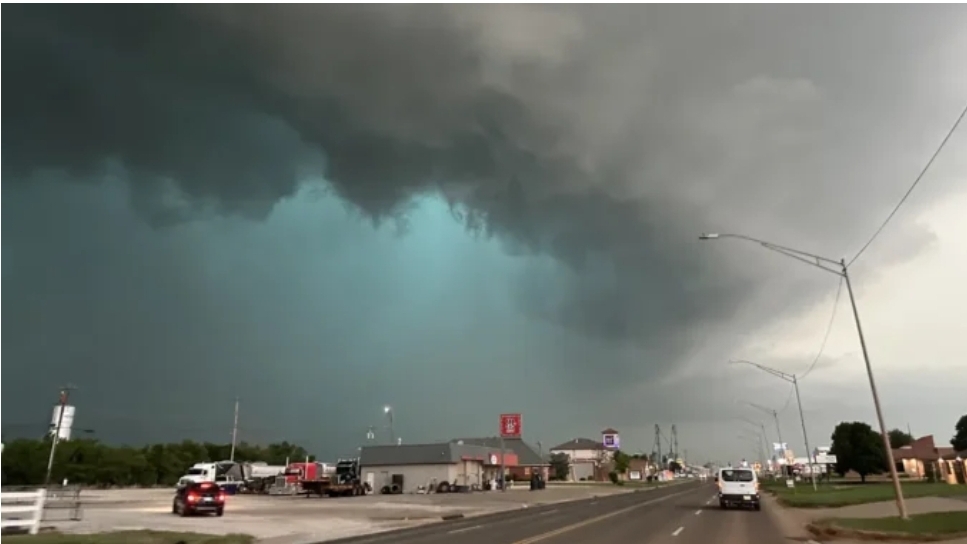A storm that has never been seen before is expected to hit the West Coast and wreck the seas along its path. As the storm quickly gets stronger, the National Weather Service has sent out urgent warnings about rising waves and strong gusts.
A big bomb cyclone is forming off the coast of the West shore right now. This bomb cyclone could bring strong winds, a lot of snow, and heavy rain over the course of the week. Meteorologists have sent out an alert because the storm is getting stronger very quickly. This is called bombogenesis.
A cyclone storm is a large-scale weather system characterized by low atmospheric pressure, high winds, and heavy rain. Cyclones can form over warm ocean waters and are classified into different types based on their location and characteristics:
- Tropical Cyclones: These occur in tropical regions and are fueled by warm ocean waters. They can develop into hurricanes or typhoons depending on where they form.
- Extratropical Cyclones: These form outside the tropics and are associated with fronts and temperature contrasts. They can bring severe weather, including snowstorms and heavy rain.
Cyclones are known for their strong winds, which can cause significant damage, and their ability to produce heavy rainfall, leading to flooding. They are monitored by meteorological organizations to provide warnings and forecasts to help mitigate their impacts.
The main differences between hurricanes and typhoons are primarily based on their location:
- Naming: The term “hurricane” is used for storms that form in the Atlantic Ocean and the northeastern Pacific Ocean. In contrast, “typhoon” refers to storms that develop in the northwestern Pacific Ocean.
- Geographic Regions: Hurricanes typically affect areas such as the Caribbean, the Gulf of Mexico, and the eastern United States, while typhoons are more common in regions like Southeast Asia and the western Pacific, including countries like Japan and the Philippines.
- Formation: While both types of storms form under similar conditions—warm ocean waters, moist air, and low atmospheric pressure—the specific oceanic and atmospheric conditions in their respective regions can influence their development and intensity.
Despite these differences, hurricanes and typhoons are essentially the same type of storm, just with different names depending on where they occur.
Hurricanes and typhoons can have devastating impacts on the regions they affect. Here are some of the main consequences:
- Wind Damage: Both hurricanes and typhoons can produce extremely high winds, often exceeding 150 miles per hour. These winds can destroy buildings, uproot trees, and down power lines, leading to widespread power outages.
- Flooding: Heavy rainfall associated with these storms can cause significant flooding. Storm surges, which are large waves generated by the storm’s winds, can inundate coastal areas, leading to severe property damage and loss of life.
- Landslides: In mountainous regions, the intense rainfall can trigger landslides, further endangering lives and property.
- Economic Impact: The destruction caused by hurricanes and typhoons can lead to substantial economic losses. This includes damage to infrastructure, homes, and businesses, as well as the costs associated with recovery and rebuilding.
- Displacement: Many people may be forced to evacuate their homes and seek shelter elsewhere, leading to temporary or long-term displacement.
- Environmental Effects: The natural environment can also suffer, with ecosystems disrupted, habitats destroyed, and pollution from damaged industrial sites.
Overall, the impact of hurricanes and typhoons can be catastrophic, affecting not just immediate safety but also long-term recovery and resilience of communities.
Common warning signs of a cyclone include:
- Severe Weather Alerts: Pay attention to weather forecasts and alerts from meteorological services. Warnings may indicate the potential for cyclones.
- Darkening Skies: A sudden change in the weather, such as dark, ominous clouds gathering quickly, can signal an approaching cyclone.
- Strong Winds: Increased wind speeds and shifts in wind direction are often precursors to cyclones.
- Heavy Rainfall: Intense rainfall, especially if it starts suddenly, can indicate that a cyclone is nearby.
- Rising Tides and Storm Surges: If you’re near the coast, watch for unusually high tides or surges, which can be a sign of an approaching cyclone.
- Animal Behavior: Animals may exhibit unusual behavior, such as seeking higher ground or showing signs of distress, before a cyclone arrives.
Being aware of these signs can help you prepare and respond effectively to a cyclone threat. Stay alert!
If a cyclone is happening, here are some important safety tips to keep in mind:
- Stay Informed: Keep track of weather updates through local news, radio, or weather apps. Follow any evacuation orders or safety instructions from authorities.
- Secure Your Home: Close all windows and doors, and secure any loose items outside that could become projectiles in strong winds. If possible, board up windows with plywood.
- Prepare an Emergency Kit: Have a kit ready that includes essentials like water, non-perishable food, medications, flashlights, batteries, a first aid kit, and important documents.
- Find a Safe Location: If you’re in an area prone to flooding or storm surge, move to higher ground or a designated shelter. Stay away from windows and doors.
- Stay Indoors: During the cyclone, remain indoors and away from windows. Stay in a small, windowless room or hallway if possible.
- Avoid Using Candles: If the power goes out, use flashlights instead of candles to reduce the risk of fire.
- Wait for the All-Clear: Don’t venture outside until authorities have confirmed it’s safe, as there may be hazards like downed power lines or flooding.
By following these steps, you can enhance your safety during a cyclone. Stay safe!
